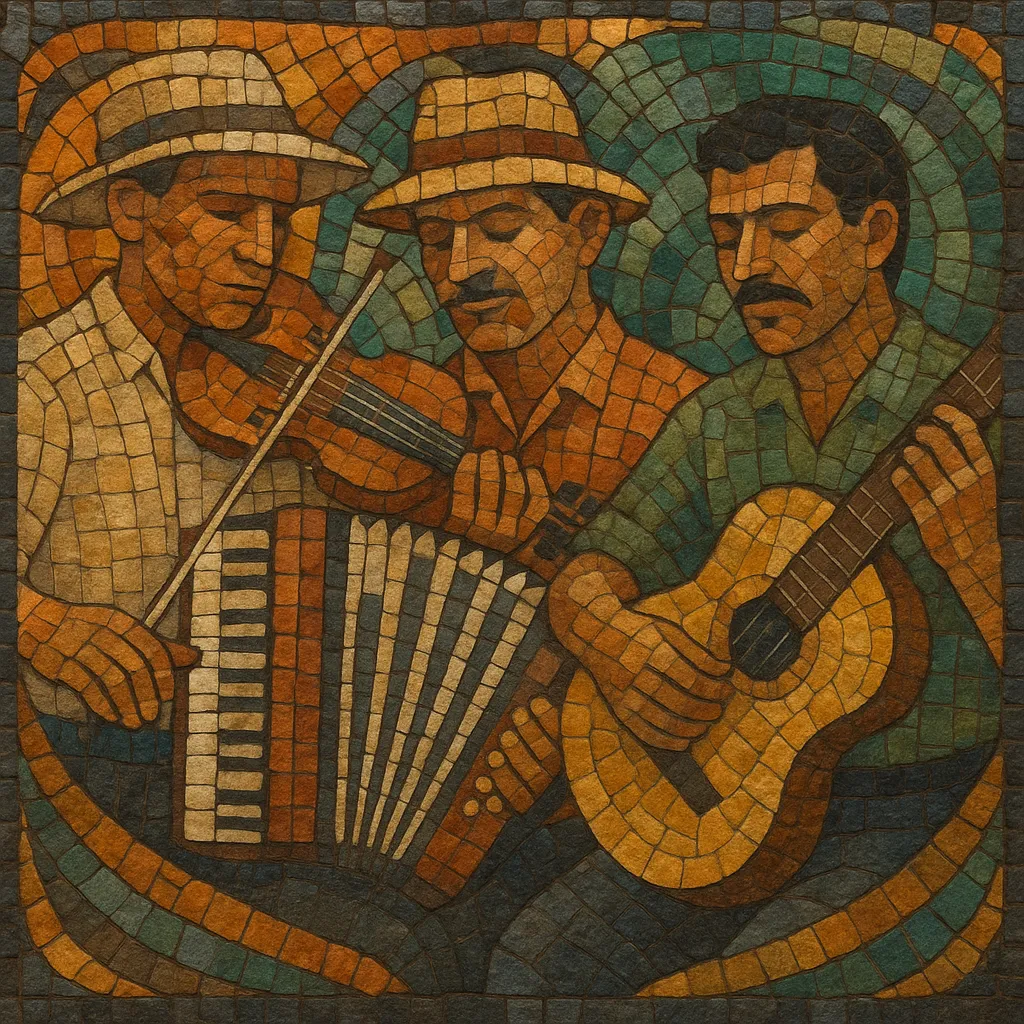
Afrikaner folk music is the traditional music of South Africa’s Afrikaner (Dutch-descended) community, rooted in the dance repertoire and domestic song culture that developed from the 18th and 19th centuries onward.
At its core are lively dance tunes (polka, mazurka, schottische, waltz, vastrap, seties) performed on concertina or accordion with fiddle, guitar, and rhythm section, alongside slower strophic “volksliedjies” (folk songs) sung in Afrikaans. Melodies are straightforward and memorable, harmonies are largely diatonic and triadic, and the feel is explicitly social—meant for community dances, weddings, and home entertainment.
While primarily European in origin (Dutch, German, French Huguenot, Scottish/Irish), the style reflects South African contexts, absorbing local grooves and repertoire, interacting with Cape and rural traditions, and evolving into the modern Afrikaans singer‑songwriter and folk-rock streams.
Afrikaner folk music took shape in the Cape Colony among settlers of Dutch, German, and French Huguenot origin. Domestic singing in Afrikaans (and earlier, Cape Dutch) and household dance music flourished on farms and in small towns. European couple dances—polka, schottische, mazurka, and waltz—were localized, and portable free-reed instruments (notably the concertina and later the accordion) became central to the sound.
By the late 19th century, a distinct instrumental dance tradition—often called boeremusiek—coalesced around concertina- and fiddle-led ensembles. Tunes served social functions: sokkie and langarm dances, church fairs, and community gatherings. During and after the Anglo-Boer War (1899–1902), topical songs and sentimental “volksliedjies” circulated orally, reinforcing shared identity.
With radio and gramophone recording, Afrikaans repertoire entered the commercial domain. Artists popularized folk songs and new dance numbers, and concertina virtuosity became a hallmark. The repertoire blended imported dance forms with local aesthetics, yielding a recognizably South African take on European folk dance music.
From the 1970s–1980s, Afrikaans singer‑songwriters drew on folk idioms to address contemporary life. The Voëlvry movement (late 1980s) infused folk with rock attitude and protest, while others preserved and revived traditional dance sets and rural performance practices. Festivals, school programs, and archival projects expanded documentation and transmission.
A renewed interest in acoustic instrumentation, storytelling in Afrikaans, and heritage dance led to revivals, crossovers with country, and collaborations with other South African styles. Modern acts juxtapose concertina, guitar, and fiddle with subtle production, keeping communal dance energy and narrative songwriting at the music’s core.

